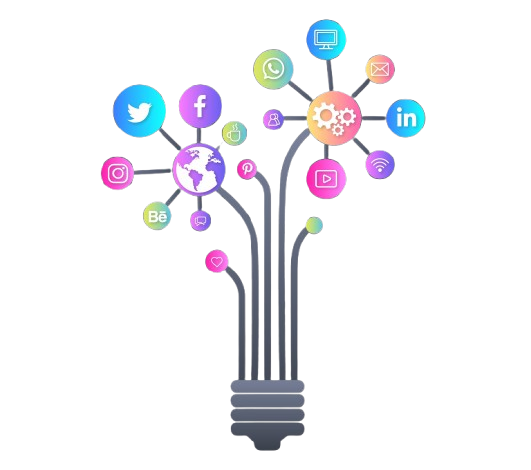Summary
In today’s digital-first world, tech companies must do more than just innovate – they must also communicate their value effectively. Social media has become a powerful tool for building brand authority, reaching niche audiences, and generating leads. This blog, brought to you by Appbirds Technologies, outlines 7 proven social media marketing strategies specifically tailored for tech brands – from identifying your audience and choosing the right platforms to sharing expert content and analyzing performance. Whether you’re a startup or a scaling enterprise, these tips will help you grow your presence, connect meaningfully, and drive measurable results.
Introduction
With the digital world constantly evolving, social media has turned into an indispensable tool for modern businesses. However, for tech companies, where innovation and disruption are at the core, leveraging social media marketing strategically can be the key to standing out, attracting customers, and establishing a thought leadership position in the industry.
At Appbirds Technologies, we’ve seen how powerful and transformative social media can be for tech-driven enterprises, from boosting visibility to nurturing lasting customer relationships.
Whether you are a startup, a SaaS business, or a large IT solutions provider, the power of social media can help you scale your visibility, connect with your target audience, and drive sustainable growth. This blog explores seven tried-and-tested social media strategies specifically tailored for tech companies, supported by examples, tips, and actionable insights.
Here’s a quick overview of the key strategies discussed in this blog and where to focus your efforts depending on your goals and audience:
| Strategy No. | Strategy Title | Key Focus Area | Recommended Platforms |
| 1 | Define Your Target Audience & Set Goals | Build personas, define goals, align messaging | All |
| 2 | Choose the Right Platforms | Pick platforms based on your audience’s habits | LinkedIn, Twitter (X), YouTube |
| 3 | Share Educational & Technical Content | Establish expertise, build trust | LinkedIn, Blogs, YouTube |
| 4 | Leverage Visual & Video Content | Boost engagement, explain products visually | YouTube, Instagram, LinkedIn |
| 5 | Engage With Your Community | Respond, comment, build relationships | Twitter (X), Reddit, LinkedIn |
| 6 | Use Paid Ads Strategically | Target leads, boost posts, retarget with precision | LinkedIn Ads, Meta Ads |
| 7 | Track, Analyze & Optimize Performance | Improve strategy with data insights | Use tools like GA4, Sprout |
1. Define Your Target Audience and Set Clear Goals
A successful marketing strategy starts with a clear understanding of your audience and goals. Knowing who you’re targeting – what they care about, their habits, and where they spend time – is crucial. Equally important is defining your objectives, whether it’s building brand awareness, generating leads, or growing a community. With a clear target and purpose, your campaigns are more likely to resonate and drive meaningful action.
Key Actions:
- Create detailed audience personas: Are you targeting CTOs, software developers, startups, or enterprise buyers?
- Define goals: Awareness, engagement, lead generation, website traffic, or app installs?
- Align your content and tone of voice with the specific needs and behaviors of your audience.
Example: A SaaS company targeting HR managers may focus on LinkedIn content that addresses employee productivity, HR automation, and digital transformation in the workplace.
2. Choose the Right Social Media Platforms
Each social media platform serves a distinct purpose and attracts different types of users. For tech companies, it’s crucial to identify where their target audience is most active and customize content to suit those specific platforms. By focusing on the platforms that align with their audience’s preferences and tailoring content accordingly, tech companies can engage more effectively, fostering stronger connections and achieving better results.
Best Platforms for Tech Companies:
- LinkedIn: Best for B2B outreach, thought leadership, and professional networking.
- Twitter (X): Great for real-time news, connecting with developer communities, sharing product updates, and getting support.
- YouTube: Ideal for product demos, explainer videos, and tutorials.
- Instagram: Great for employer branding, behind-the-scenes looks, and showcasing innovation.
- Reddit and GitHub: Useful for engaging with developer communities.
Tip: Don’t spread yourself thin. Start with 2–3 platforms and expand once you have a clear content flow and engagement system in place.
3. Share Educational and Technical Content
In the tech industry, credibility is key. Audiences seek companies that understand the industry’s nuances and can provide valuable insights. By sharing educational content like blogs, tutorials, and industry updates, you establish trust and position your brand as a thought leader. This approach builds your reputation as a reliable source of information and shows your deep understanding of the tech world.
Content Ideas:
- Tech blogs and how-to guides that break down complex topics
- Industry reports, whitepapers, or case studies
- Detailed product feature breakdowns and comparisons
- Step-by-step tutorials and walkthroughs to help your audience solve problems
- User-generated content or customer reviews that showcase real-world experiences
- Live Q&As, webinars, and interviews with experts that engage and educate in real-time
Tip: Break longer-form content into multiple social-friendly snippets to extend reach and increase engagement.
4. Leverage Paid Advertising Smartly
Organic reach on platforms like Facebook and LinkedIn is now limited due to algorithm changes and increased competition. To boost visibility and ROI, tech companies must invest in targeted paid campaigns that align with their sales funnel. Paid ads help reach a more specific audience, increasing the chances of engagement and conversions. By targeting the right people at the right stage, companies can drive more meaningful results from their campaigns.
Use Paid Ads to:
- Users who have previously interacted with your brand should be retargeted.
- Promote webinars, free trials, product launches, or other key initiatives
- Reach specific job titles, industries, or geographic locations with tailored messaging
Best Practices:
- Use clean, professional visuals
- Focus on highlighting user pain points and offering clear, actionable solutions
- Include strong calls-to-action (CTAs)
- A/B test different creatives and copy
Example: A cloud services provider could run a LinkedIn ad campaign targeting CIOs of mid-sized companies offering a downloadable cloud migration checklist.

5. Highlight Company Culture and Talent
Social media has evolved beyond product promotion to focus on building relationships. Audiences want to connect with the people behind the brand and understand its culture. For tech companies, showcasing company culture is crucial to attract talent and establish an authentic brand image. Sharing behind-the-scenes moments and team stories humanizes your brand and builds trust with both potential employees and customers.
Content Ideas:
- Team member spotlights
- Office events and celebrations
- Day-in-the-life stories
- Company milestones and achievements
Example: Post a short Instagram reel showing a hackathon event at your office or a photo series on “Women in Tech” at your company. It helps your brand feel more authentic and attractive to future employees and collaborators.
6. Engage with the Community
Engagement on social media is a two-way street—it’s not enough to just broadcast your message. You must listen, respond, and interact with your audience to build trust and foster relationships. Actively engaging creates a loyal community, enhances your brand’s reputation, and can generate word-of-mouth referrals. Thoughtful responses show respect for your audience and help turn customers into long-term advocates.
How to Engage:
- Reply to comments and DMs
- Run interactive polls, quizzes, and contests to encourage participation and gather insights
- Share and comment on industry trends
- Join LinkedIn and Facebook groups related to your niche
Example: Join conversations around trending hashtags like #DevOps, #AI, or #Cybersecurity on Twitter, or comment meaningfully on LinkedIn posts from industry leaders to gain visibility.
7. Track Performance and Continuously Optimize
Success in social media marketing comes from consistently measuring and improving your efforts. Regularly reviewing your analytics provides insights into what resonates with your audience and what doesn’t. Tracking key metrics like engagement rate, click-through rate, and lead conversions helps refine strategies for better results. By focusing on meaningful data and continuously optimizing, you can maximize the effectiveness of your campaigns.
Tools You Can Use:
- Google Analytics
- LinkedIn Insights
- Twitter/X Analytics
- Meta Business Suite
- Tools like Hootsuite, Buffer, and Sprout Social for managing schedules and tracking analytics
What to Track:
- Top-performing content types (videos, blogs, carousels, etc.) to see what resonates best with your audience
- Audience demographics to understand who is engaging with your content and tailor your messaging
- Traffic sources and lead attribution to determine where your leads are coming from and which channels drive the most conversions
- Hashtag performance to measure which hashtags are boosting visibility and engagement.
Tip: Use insights to improve future campaigns, identify new content angles, and refine your targeting.
Why Choose Appbirds for Tech Social Media Marketing?
At Appbirds Technologies, we understand the unique challenges tech companies face in today’s fast-paced digital landscape. From complex product messaging to targeting niche B2B audiences, we know how to translate technical brilliance into powerful, relatable brand stories.
Here’s why tech companies trust Appbirds to lead their social media marketing:
- 🚀 Tech Experts: We understand the tech landscape—SaaS, AI, apps & more.
- 🎯 Custom Strategies: Tailored plans for your product & audience.
- 🧠 Smart Content: Engaging, tech-driven posts that convert.
- 📊 Data-Driven: Results you can track, analyze, and scale.
- 🌍 Trusted by Tech Brands: From startups to enterprises.
Final Thoughts
In an industry driven by constant innovation, tech companies need to stay ahead not just in product development but also in how they communicate and engage online. Social media offers a cost-effective, scalable, and dynamic platform to do just that.
By applying these 7 proven strategies, you can:
- Build a strong brand presence
- Connect with industry leaders
- Attract leads and talent
- Establish thought leadership
Keep in mind, social media marketing needs to be tailored – it’s not a one-size-fits-all strategy. Continuously test, listen, adapt, and grow your strategy as your company evolves.
At Appbirds Technologies, we specialize in creating custom social media strategies that align with your unique business goals. Whether you’re launching your first product or scaling globally, the right social media marketing strategy can give your tech brand the visibility, credibility, and engagement it needs to thrive.
Contact us today to take your social media marketing to the next level and watch your tech brand soar!
FAQs
Why is social media important for tech companies?
Social media helps tech companies build brand awareness, connect with their target audience, showcase innovations, and position themselves as industry leaders – all while driving traffic and lead generation.
Which social media platforms are best for tech companies?
LinkedIn, Twitter (X), and YouTube are ideal for most tech companies. LinkedIn works well for B2B connections, Twitter is great for real-time updates and community engagement, and YouTube is perfect for explainer videos and product demos.
What type of content should tech companies post on social media?
Tech companies should focus on educational and value-driven content such as how-to guides, case studies, product tutorials, industry news, infographics, and behind-the-scenes content that highlights company culture.
How can tech startups use social media for lead generation?
Startups can use targeted paid ads, share downloadable resources (like eBooks or checklists), host webinars, and use call-to-action (CTA) posts to drive qualified traffic and convert followers into leads.
How do I measure the success of my tech brand’s social media marketing?
Key metrics include engagement rate, reach, follower growth, click-through rate (CTR), website traffic from social, and conversion rates. Leverage tools like Google Analytics and platform-specific insights to monitor and assess performance.
How often should tech companies post on social media?
Consistency matters more than frequency. Ideally, post 3–5 times per week, depending on the platform. Ensure every post adds value and aligns with your goals and audience interests.



